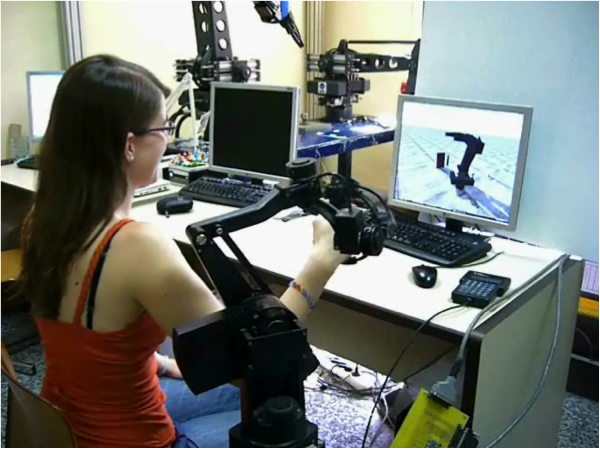
Friday, July 27, 2012
Big Engineering 50 Everybody Working From Home & Working In Space
A robot remotely controlled by a low-wage foreign worker could soon compete with some U.S. workers, suggests MIT doctoral student in information technology Matt Beane in Technology Review....
The next wave promises much more capability per dollar. DARPA recently issued a robotic challenge involving a complex set of tasks to be performed by a semiautonomous, remote-controlled humanoid robot — driving, walking through rubble, replacing a valve.
Progress toward the “avatarization” of the economy has been limited by the speed of Internet connections and the latency involved in long-distance communication. ...Theoretically, too, the distance between robot and worker shouldn’t exceed 1,800 miles: any farther and the operator could get confused by the time lag as signals travel round-trip.
Realistically, however, avatar workers can probably be effective janitors or doctors even if they are farther away and sensory fidelity is weaker. The VGo runs on Verizon’s 4G network, for instance, and the U.S. military’s drone-control facility in Italy is 2,700 miles from Afghanistan...
Telepresence means that in theory, ten, a hundred, or a thousand times as many workers could compete (virtually) for the same work. The same outsourcing logic applies to many high-wage jobs that rely on physical presence and motor skills, including the work done by cardiologists and machinists.
Beane believes outsourcing of nonroutine labor via robotic telepresence could begin to occur on a mass scale within a decade.

From Kurzweil. I added this comment.
If this makes economic sense for a job as a janitor in New York think how much sense it makes for a platinum miner on the Moon!
Somewhat more difficult to handle because the time lag is 3 seconds there and back but with feedback systems that need not be a problem for almost everything but juggling. Come to think of it juggling is easier there.
Also automata don’t need to breathe, or use up other transported resources, don't need much radiation shielding and can be made much lighter than humans.

I have written of this before but the possibilities seem to be opening out. While the Moon is quarter of a million miles away so that the send and return speed is 3 seconds I doubt if that is an insuperable or even major problem from almost all applications. If only because gravity being 1/6 of Earth's one has 6 times longer to catch something.
Also with increasing miniaturisation and the low gravity such waldoes could be made far smaller and lighter than any human. For ones working in orbit, with no gravity, I could imagine spider like remote handled machines whose body was no larger than a couple of cubesats.
My guess is that if the choice is between being a Remote janitor in California or a Remote solar power satellite assembler in orbit the choice would be obvious.
If the cost of a remote in orbit could be brought down to the mass of 1/10th of a human there would immediately be a sizable market for them, even for cubesat sized ones.
We will need human beings there to fix the unforeseen problems but it also seems possible one could eventually have 1,000 Remote hands for every present one. And Remotes can be run 24/7 by more than one person.. That this could be scalable theoretically until full employment across the world has been achieved , or until everything we want to do in at least near Earth orbit has been done. Of the 2 full employment worldwide looks the closer.

Labels: Big Engineering, Fixing the economy, Science/technology, space